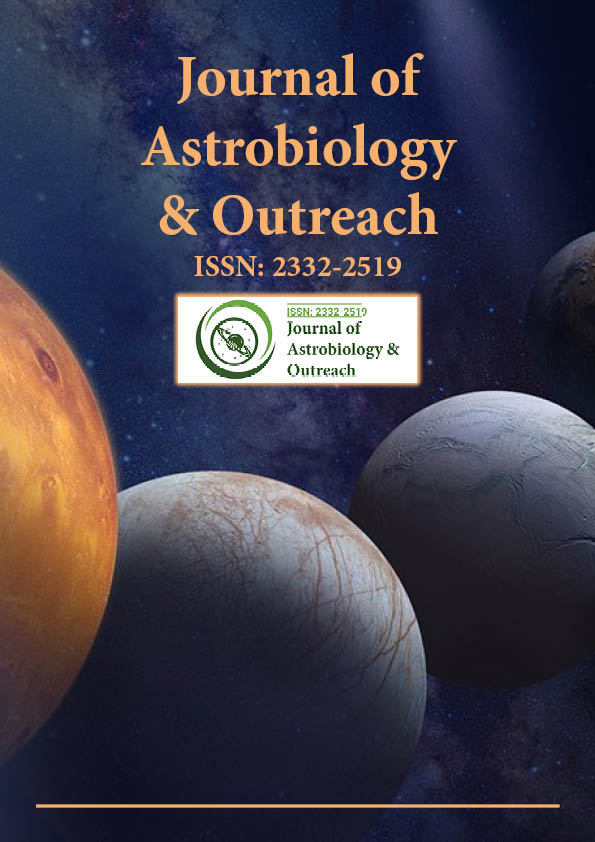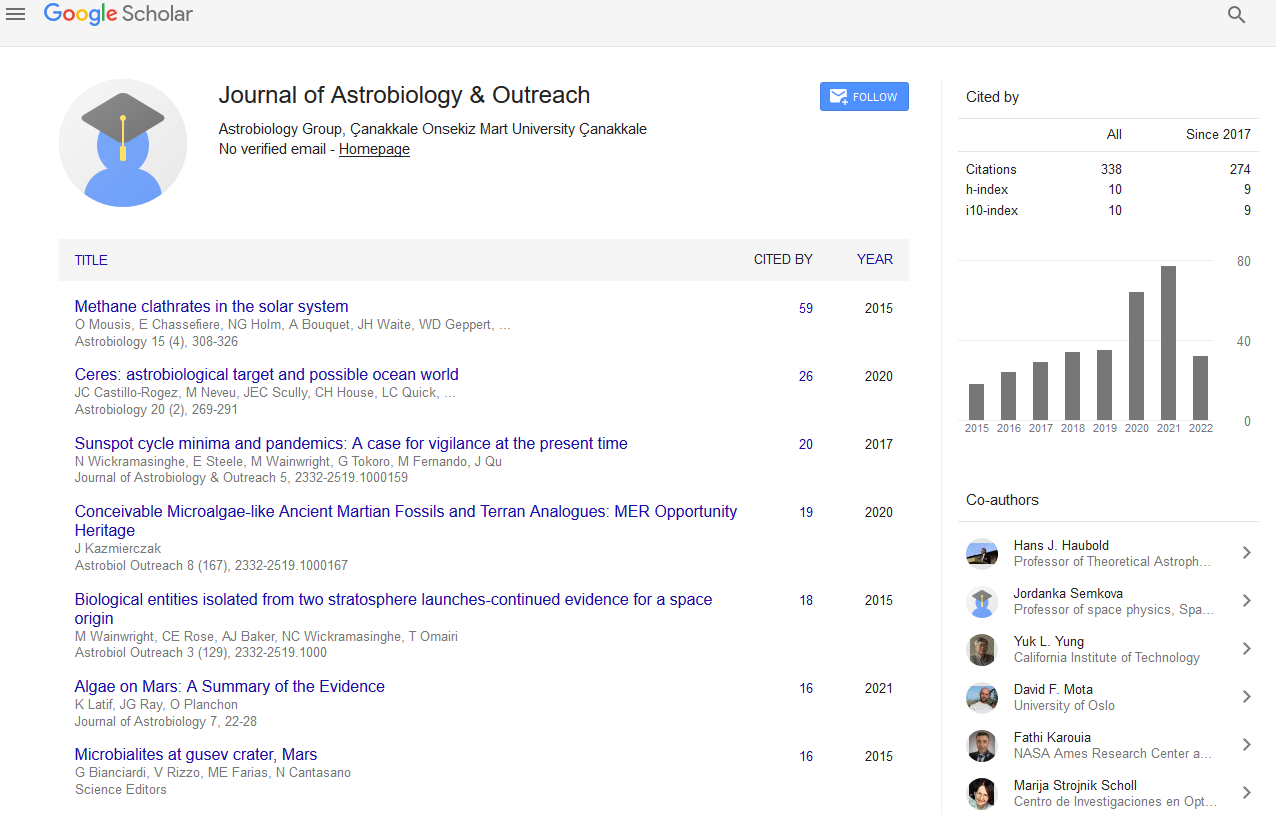Indexed In
- Open J Gate
- Academic Keys
- JournalTOCs
- RefSeek
- Hamdard University
- EBSCO A-Z
- OCLC- WorldCat
- Google Scholar
Useful Links
Share This Page
Journal Flyer

Open Access Journals
- Agri and Aquaculture
- Biochemistry
- Bioinformatics & Systems Biology
- Business & Management
- Chemistry
- Clinical Sciences
- Engineering
- Food & Nutrition
- General Science
- Genetics & Molecular Biology
- Immunology & Microbiology
- Medical Sciences
- Neuroscience & Psychology
- Nursing & Health Care
- Pharmaceutical Sciences
Commentary - (2024) Volume 12, Issue 4
Formation and Evolution of Giant Extrasolar Planets: Insights from Analytical Modeling
Emma Harrison*Received: 29-Nov-2024, Manuscript No. JAO-24-28009; Editor assigned: 02-Dec-2024, Pre QC No. JAO-24-28009 (PQ); Reviewed: 16-Dec-2024, QC No. JAO-24-28009; Revised: 23-Dec-2024, Manuscript No. JAO-24-28009 (R); Published: 30-Dec-2024, DOI: 10.35248/2332-2519.24.12.362
Description
The study of extrasolar planets, particularly giant planets, continues to be a central focus in the field of exoplanet research. Understanding the formation and evolution of these celestial bodies provides critical insights into planetary systems, including the mechanisms that influence the development of habitable environments. Recent advancements in theoretical modeling, particularly the analytical models that describe the evolution of giant extrasolar planets, have refined our understanding of the factors that influence their structure, composition and orbital evolution. These models are essential for interpreting observational data and for informing future missions aimed at characterizing exoplanetary systems.
Giant planets, such as Jupiter and Saturn, are the most massive type of planet observed both within our solar system and in exoplanetary systems. These planets are primarily composed of hydrogen and helium, with a significant presence of heavier elements that contribute to their complex atmospheres and interior structures. The evolution of these planets is shaped by a combination of processes, including gravitational interactions, accretion of gas and solids and the dissipation of heat. The formation and growth of giant planets in extrasolar systems depend on various factors, such as the mass of the protoplanetary disk, the metallicity of the surrounding environment and the mechanisms of nearby planetesimals and smaller planetary embryos.
The analytical model for the evolution of giant extrasolar planets provides a structure for understanding these complex processes by providing a simplified yet powerful representation of how such planets evolve over time. These models typically incorporate aspects of hydrodynamics, thermodynamics and material science to simulate the accumulation of gas and dust, the differentiation of planetary interiors and the development of planetary atmospheres. One of the critical contributions of these models is their ability to predict the final mass, composition and orbital characteristics of giant planets based on initial conditions, allowing for comparisons with observed exoplanets.
One of the fundamental aspects addressed by such models is the timescale over which giant planets form and reach their current state. The growth of a giant planet is governed by its ability to accrete gas and solid materials from the surrounding protoplanetary disk. In the early stages, the planet undergoes rapid accumulation of solid material, forming a foundation that can subsequently attract and accrete hydrogen and helium from the disk. The process of gas accretion is highly sensitive to the temperature and density of the surrounding environment, as well as the planet's growing gravitational influence. The model also takes into account the role of feedback mechanisms, such as the cooling of the planet's interior, which affects its ability to retain gas over time.
The evolution of the orbits of giant planets is another area where analytical models make significant contributions. Gravitational interactions between planets and between a planet and its host star can lead to orbital migration, where a planet's position within the protoplanetary disk changes over time. These interactions can lead to the inward or outward movement of planets, potentially resulting in planetary systems that are very different from the ones found in our own Solar System. The model also considers the effects of tidal interactions between the planet and its star, which can influence the planet’s orbital decay or stability over long periods.
In conclusion, the analytical model for the evolution of giant extrasolar planets plays a significant role in our understanding of planetary formation, mechanism and the factors that influence the variety of exoplanetary systems. These models provide critical structures for interpreting observational data and making predictions about the types of giant planets that may be found in other star systems. By examining the exchange between accretion, orbital migration and atmospheric evolution, scientists can gain deeper insights into the processes that control the formation of planets, which is essential for understanding the major consequences of planetary habitability.
Citation: Harrison E (2024). Formation and Evolution of Giant Extrasolar Planets: Insights from Analytical Modeling. J Astrobiol Outreach. 12:362.
Copyright: © 2024 Harrison E. This is an open-access article distributed under the terms of the Creative Commons Attribution License, which permits unrestricted use, distribution, and reproduction in any medium, provided the original author and source are credited.

